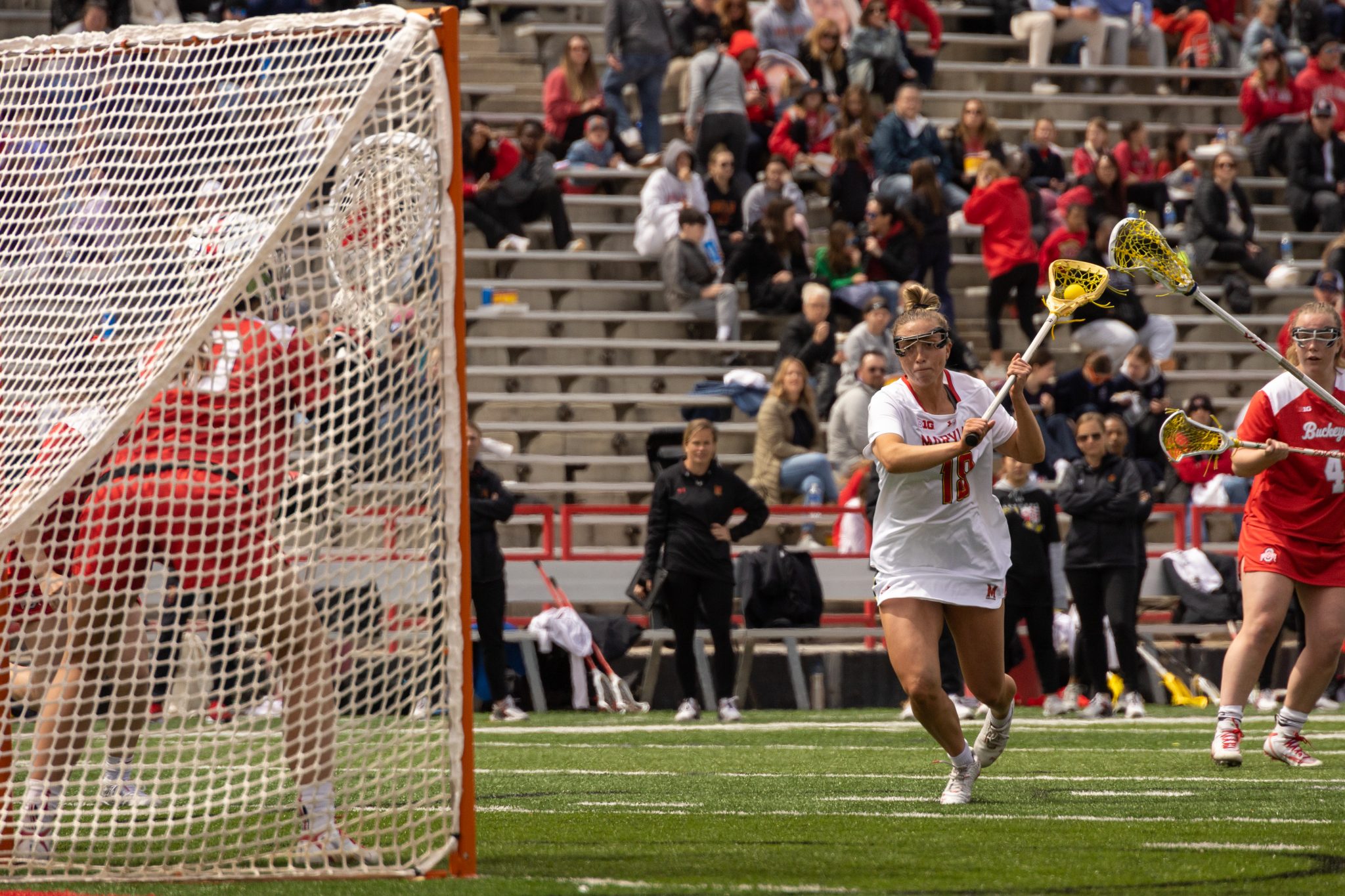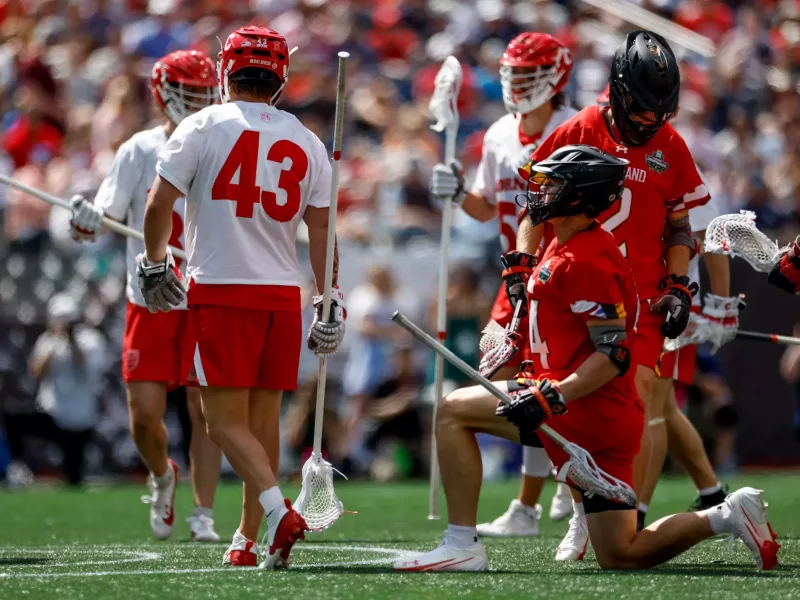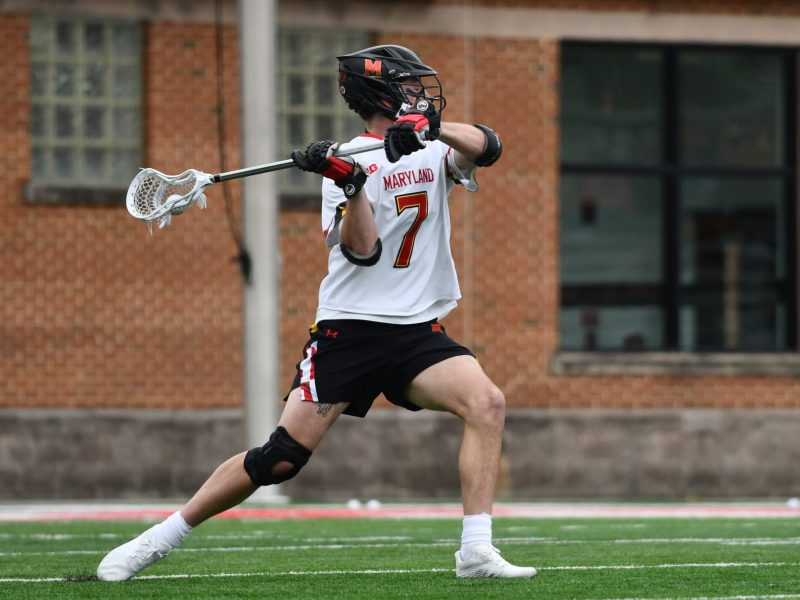Maryland midfielder Maisy Clevenger picked up the ball and stood eight meters away from the goal. She was positioned just to the right of the goalie, the only opposing player standing between her and the net. Clevenger crouched down — placing her stick on her shoulder — and waited for the referee’s whistle.
Instead of shooting, she passed across the shooting arc to an open Hannah Leubecker. Clevenger’s teammate caught the feed and fired a shot that rippled the net during the first quarter in Maryland women’s lacrosse’s win at Denver.
The score, which started directly from a free position opportunity, didn’t register as a successful free position shot because Clevenger opted to pass. The Terps still capitalized.
The Terps’ free position scoring rate is low. Maryland converted six of its free position attempts this season for a 26 percent success rate, which is the third-worst in the country.
It’s an aspect of the Terps’ attack that coach Cathy Reese believes needs improvement, but her team’s low success rate from eight meters ignores the fact that the Terps’ game plan isn’t based solely around shooting from free position opportunities.
“We try not to pre-plan, so we try to read what the defense is giving us,” attacker Victoria Hensh said. “Where they line up on the eight meter is usually dependent on if we’re going to pass it, [or] whether you’re going to veer a certain way.”
[No. 9 Maryland women’s lacrosse breezes past William & Mary, 20-5]
An attacking team is awarded a free position shot when a foul occurs inside the eight meter arc. The attacking player lines up eight meters away from the goal with a free path to the cage, as all defensive players must be outside the shooting space.
“You line up, and if you can get in the right mindset and mind frame that you can knock it down and execute it, but if you’re questioning yourself for a second that ball is hitting off the rim,” Reese said, comparing free position shots to free throws in basketball.
Players used to consistently just line up and shoot the ball, according to Reese, who played as an attacker from 1994 to 1998 at Maryland. Boston College’s Charlotte North brought a similar approach to the current generation, hitting more than 60 percent of her free position shots in 2021 and 2022 by peppering the goalie.
No current Maryland player can quite replicate the dominance North displayed in her college career. Attacker Libby May was more than 50 percent effective in 2022 and 2023, but hasn’t tallied from a free goal yet this year.
Many Terps are also opting to pass from eight meters instead of shoot, depending on the situation.
[A week after collapsing, Maryland women’s lacrosse’s defense held strong against Denver]
The position across the shooting arc can dictate a shot or a pass. The attacker will begin on one of six hash marks, decided by the referee based on proximity to the foul or the severity of the infraction. A player starting at the top of the line will be more enticed to shoot, compared to someone who is forced to the outer marks.
“I think it is player preference … know what we’re good at and what our strengths are,” Hensh said.
An opposing defense’s alignment will also provide a choice for Terp attackers. Maryland isn’t afraid to opt for a pass if someone is unmarked — Denver left Leubecker open on Saturday, and she scored off Clevenger’s pass.
At other times, the ball might be passed out of the close-range situation to kill time late in contests or if the Terps prefer to run their player-up offense.
“Sometimes it’s where the D sets up. Sometimes it’s who they leave open. Sometimes it’s a shooter, we have some people that really love to shoot free positions,” Reese said. “I think everything regarding the eight meter in women’s lacrosse is very situational.”
Maryland is one of the worst teams in the country in free position shooting by the numbers, but the Terps have found different ways to capitalize on the opportunities and find goals. Leubecker’s finish was one that stemmed from Maryland’s variety of free position approaches.



